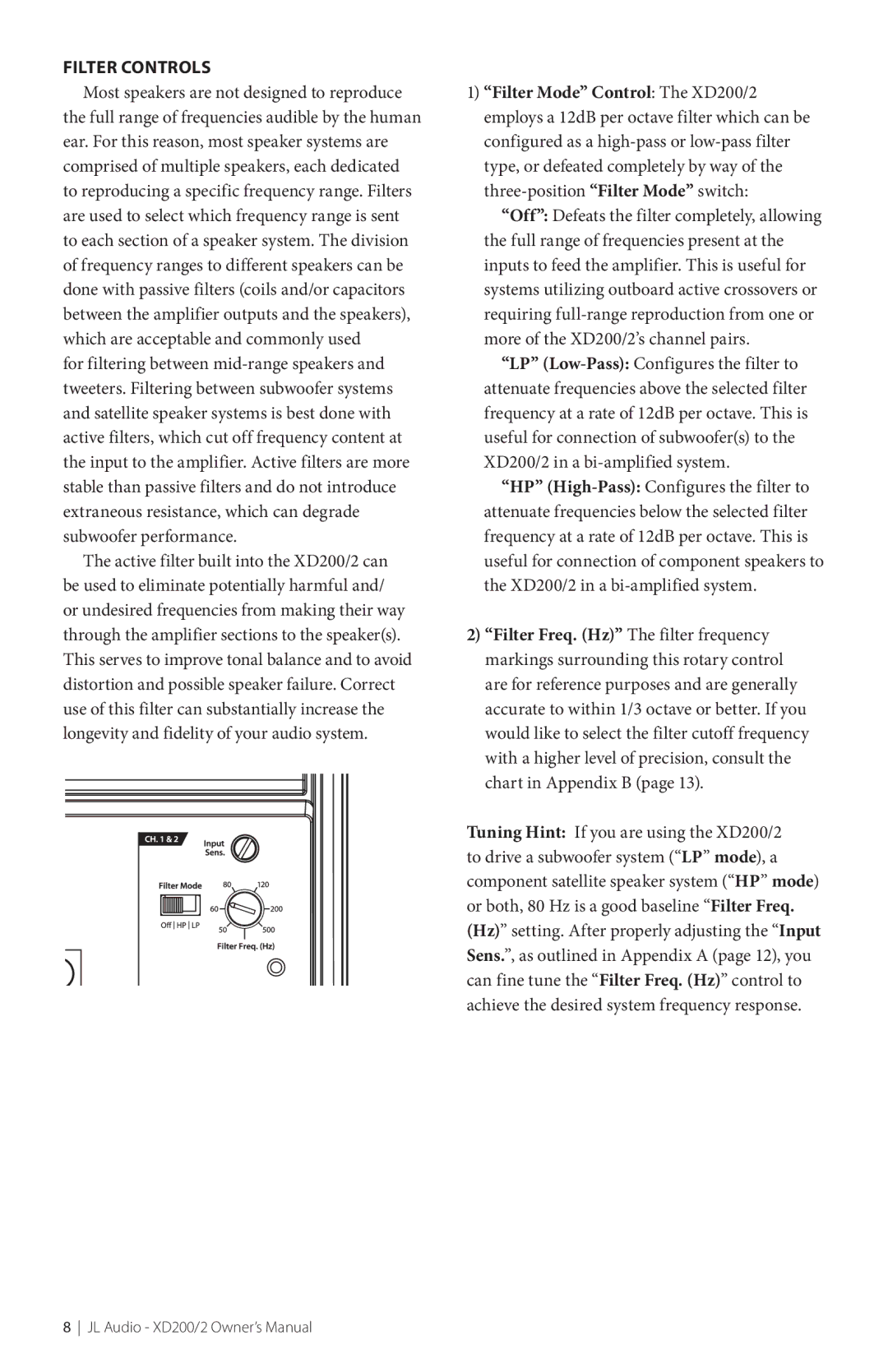
FILTER CONTROLS
Most speakers are not designed to reproduce
the full range of frequencies audible by the human ear. For this reason, most speaker systems are comprised of multiple speakers, each dedicated to reproducing a specific frequency range. Filters are used to select which frequency range is sent to each section of a speaker system. The division of frequency ranges to different speakers can be done with passive filters (coils and/or capacitors between the amplifier outputs and the speakers), which are acceptable and commonly used
for filtering between
The active filter built into the XD200/2 can be used to eliminate potentially harmful and/ or undesired frequencies from making their way through the amplifier sections to the speaker(s). This serves to improve tonal balance and to avoid distortion and possible speaker failure. Correct use of this filter can substantially increase the longevity and fidelity of your audio system.
1)“Filter Mode” Control: The XD200/2 employs a 12dB per octave filter which can be configured as a
“Off”: Defeats the filter completely, allowing the full range of frequencies present at the inputs to feed the amplifier. This is useful for systems utilizing outboard active crossovers or requiring
“LP”
“HP”
2)“Filter Freq. (Hz)” The filter frequency markings surrounding this rotary control are for reference purposes and are generally accurate to within 1/3 octave or better. If you would like to select the filter cutoff frequency with a higher level of precision, consult the chart in Appendix B (page 13).
Tuning Hint: If you are using the XD200/2 to drive a subwoofer system (“LP” mode), a component satellite speaker system (“HP” mode) or both, 80 Hz is a good baseline “Filter Freq. (Hz)” setting. After properly adjusting the “Input Sens.”, as outlined in Appendix A (page 12), you can fine tune the “Filter Freq. (Hz)” control to achieve the desired system frequency response.
8 JL Audio - XD200/2 Owner’s Manual
